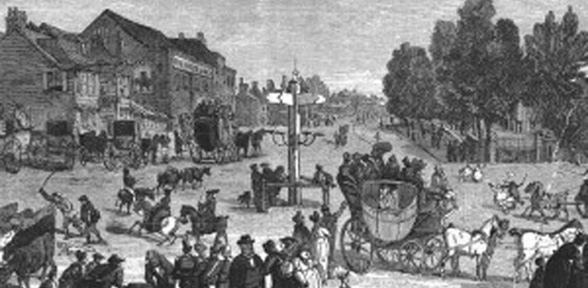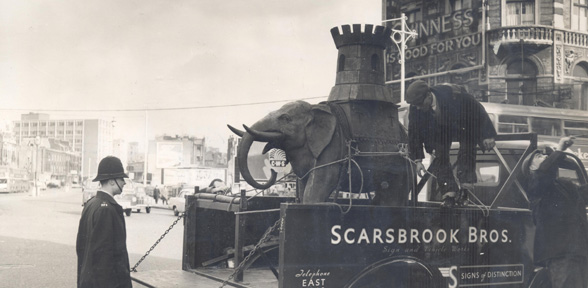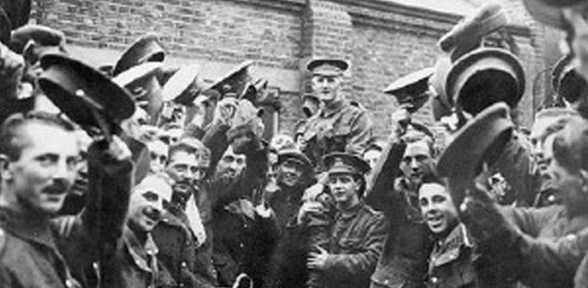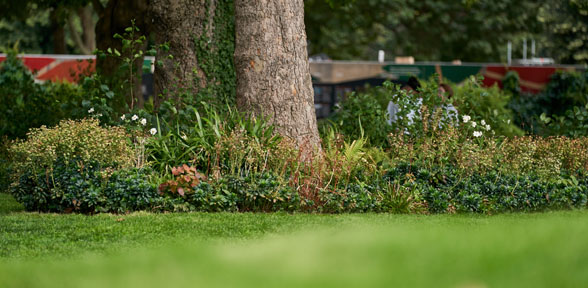


Crossroads to Londonium
The history of Elephant & Castle dates to the Roman times where two roads intersected in the area and provided access to the Roman town of Londinium. The place we now call the Elephant & Castle started life as two prosperous villages, Walworth and Newington, set among market gardens, fields and open marshland. It’s also well documented that a pub, or tavern, was open in Elephant and Castle around this time operating as an inn, near the crossroads.


1890 - 1940
Following the 1890s, Elephant & Castle really began to come to life. The area was home to a diverse mix of people, living in everything from modest almshouses to traditional terraces. Known as the “Piccadilly of South London”, residents had top quality entertainment on their doorstep with numerous theatres opening and commerce boomed with grand new department stores opening. All within easy access to London with a host of transport options including the horse cart from 1829, the first overland rail in 1862, the London Underground’s Northern Line reaching the area in 1890 which was quickly followed by the electric tram in 1903 and motorbuses in 1904.


1940 & post war development
Elephant & Castle, like much of London, suffered extensive war damage during the Second World War. In the years following, 50 acres were identified for redevelopment. High density, slab-block estates and a large gyratory road system replaced terraced streets and bombsites. This included the construction of an electricity substation names the Michael Faraday Memorial, in honour of the local scientist who pioneered research into electricity. In the early 1960s, the Elephant and Castle shopping centre was built, the first of its kind in Europe and became one of the defining aspects of the district. It was around this time, in 1965, when the London Borough of Southwark was formed from the three metropolitan boroughs of Southwark, Camberwell and Bermondsey.


2000s
In 2002 the Greater London Authority published the ‘London Plan’ which identified Elephant & Castle as a key area of growth for London. After a considered tender process, in 2007 Southwark Council selected Lendlease as its preferred master development partner with the first planning applications being submitted by Lendlease in 2012 and outline planning permission received for the Elephant Park Masterplan being received in 2013. Since then several developments have been completed including Trafalgar Place, One the Elephant (including the constructions of the Castle Centre), South Gardens, West Grove, Park Central West and Park Central East.


The Future
The future of Elephant & Castle is brimming with promise. Elephant Park, a thriving green space that embraces nature, and community. The neighbourhood is poised for a remarkable transformation. In 2022, the unveiling of the Treehouse further elevates the area, providing a dynamic hub for community engagement and cultural exchange. This visionary landscape will blend the charm of historic landmarks with contemporary architecture, fostering a vibrant and inclusive atmosphere. As residents, entrepreneurs, and creatives unite, Elephant and Castle will flourish as a beacon of urban revitalisation, where heritage and progress intertwine to shape a remarkable future for all. Building a place where diversity thrives, opportunities abound, and the spirit of innovation propels us forward to the future.
London is home to 272 underground rail stations, many with unusual names.
From Angel to Burnt Oak, Chalk Farm to Seven Sisters, the monikers have been a part of London’s history since the first tube train embarked from Paddington station on 9 January, 1863.
The origins of these names date back much further, however. Elephant & Castle, or ‘The Elephant’, as it is known locally, is perhaps one of the more bizarre names on the map and Elephant & Castle’s history is as rich as any other London locale. But where does the name come from?
Elephant & Castle has been a major road junction in the capital since Roman times.
In 1765, a coaching inn called the Elephant and Castle established itself to offer a welcome retreat for coach traffic coming in and out of the south of London.
It has been suggested there was some form of tavern even earlier than this, because there is a reference to the ‘Elephant’ in Shakespeare’s comedy Twelfth Night, which was written around 1601.
‘In the south suburbs, at the Elephant, is best to lodge’, wrote the playwright. However, the late historian Stephen Humphrey, who wrote the definitive history of Elephant & Castle, has argued that this reference more likely relates to an establishment called the “Elephant on Bankside”, as Bankside at that time is an area that Shakespeare would have known well.
The first landlord may have chosen the name Elephant and Castle in homage to a group of medieval craftsmen who made swords and knives. Called the Worshipful Company of Cutlers, its crest, granted in 1622, shows an elephant carrying a castle.
The story goes that the elephant’s tusks symbolised the ivory handles and the high regard in which the cutlers’ implements were held, while the castle illustrated the sheer size of the elephant.
The coaching inn, which later became a pub, served this area of south London well, but was demolished in 1959 after suffering huge damage during the wars.
However, the name – and the popular drinking spot – lives on, and the Elephant & Castle pub continues to welcome customers at its current location on Newington Causeway.
Today, Elephant & Castle is home to a diverse community with hundreds of retail opportunities, an outdoor natural play area, and enough restaurants to feed an elephant!

